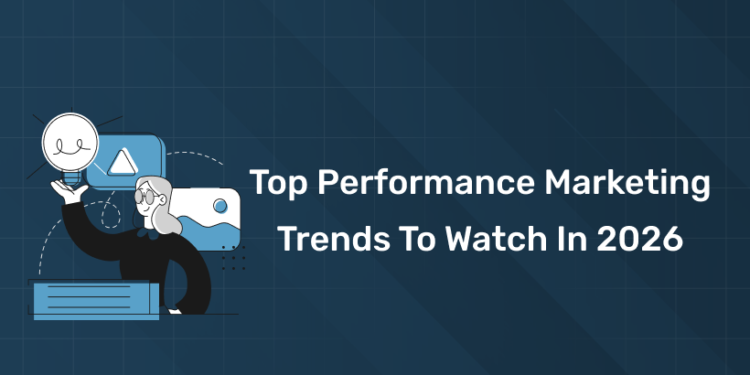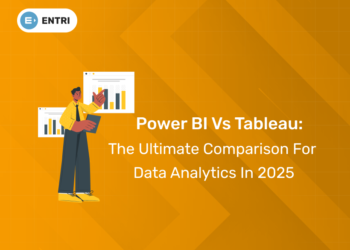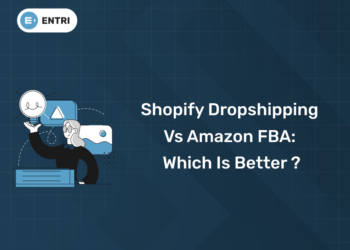Table of Contents
Key Takeaways:
- The performance‑marketing landscape is rapidly evolving: in 2026 you’ll see stronger reliance on AI‑driven automation, data‑driven attribution, omnichannel integration and privacy‑aware targeting.
- In India (and globally), marketers must adapt to new measurement methods, real‑time optimisation, and localisation (mobile‑first, regional languages) to stay ahead.
- Some “old” tactics (vanity clicks, siloed channels, set‑and‑forget campaigns) will increasingly under‑perform; the winners will focus on actionable metrics, agile testing and cross‑channel synergy.
- As a digital‑marketing aspirant or working professional, mastering these trends can help you build a future‑proof career and deliver superior results in 2026 and beyond.
Introduction
The era of “set budget, place ads, measure after month‑end” in performance marketing is evolving fast. As we look ahead to 2026, digital marketers need to be ready for a new generation of tactics, tools and metrics. Whether you’re a working professional or a digital‑marketing aspirant planning your next move, this blog covers the major trends you must know, how they’ll change your approach and what you can do to stay ahead.
In the following sections we’ll walk through eight major performance marketing trends for 2026: what they are, why they matter, how they apply and what you should do today to prepare. We’ll also connect each trend to skill development.
Join Our Online Digital Marketing Course & Learn the Fundamentals!
AI‑Driven Automation & Creative Personalisation
1: What is the primary goal of SEO (Search Engine Optimization)?
What’s changing
AI is no longer optional-it’s rapidly becoming core to ad creation, targeting, optimisation and measurement. For instance, analysts expect generative‑AI‑based video creative to reach 40 % of all ads by 2026.
Platforms are embedding AI into reach, bidding, messaging selection, and even channel‑allocation. As one source notes: “Marketers no longer think of AI as a separate tool – it’s simply there, integrated into every aspect of their work.”
Why it matters
When you can generate many ad variants quickly and test them, you gain a major speed advantage. Also, in markets like India where mobile data usage is high and cost per click (CPC) pressures exist, being able to test and optimise creative in real time becomes crucial. Without AI‑driven creative/optimization you risk being “behind” in cost‑efficiency and performance.
Become an AI-powered Digital Marketing Expert
Master AI-Driven Digital Marketing: Learn Core Skills and Tools to Lead the Industry!
Explore CourseHow to apply it
- Start using tools or platforms (or free native features) that can auto‑generate ad variants, adapt messaging for regional languages, device types and micro‑audiences.
- Use AI to generate headlines, visuals, video edits, then test which variants perform best.
- Allocate part of your budget to “creative testing with AI” and build measurement frameworks that tie creative to performance (CTR, CVR, cost per acquisition).
- As a digital‑marketing aspirant, become comfortable with AI tools (even free ones) and understand how automation works-not just the “what” but the “why.”
Action step
Identify one campaign (or small budget test) where you can use an AI‑creative tool to generate multiple ad variants and test them. Track not just clicks, but conversions and spend.
Advanced Attribution, Media Mix & Real‑Time Optimisation
What’s changing
Traditional last‑click attribution is being challenged. In 2026, marketers will demand more sophisticated attribution models, real‑time optimisation across channels, and better insights into how each dollar drives outcome. The “algorithm volatility” and complex channel interplay make this critical.
Why it matters
In India especially, campaign budgets are tight, competition is high, ROAS expectations are rising. If you don’t know which channel / creative / audience is driving value, you’ll waste spend. The ability to adapt mid‑campaign based on data becomes a competitive edge.
How to apply it
- Use or learn analytics tools that support multi‑touch attribution, media mix modelling (MMM) or incrementality testing.
- Set up dashboards to monitor daily/weekly performance across channels (search, social, display, affiliate) so you can act quickly.
- In India, consider local‑channel integration (WhatsApp ads, regional influencers, vernacular platforms) and track how they feed into conversions.
- If you’re a marketing aspirant, build your analytics skillset: know how to interpret “which channel is best?”, “when should spend shift?”, “what is the marginal cost of the next conversion?”
Action step
Create a dashboard (e.g., Google Sheets, Data Studio) combining key channels you manage. Run a test where you shift budget based on real‑time data and measure improvement in ROAS.
Omnichannel & Mobile‑First Integration
What’s changing
Consumers don’t stay in one channel. They move from
search → social → in‑app → offline store and back.
In 2026, performance marketing will demand truly omnichannel strategies (online + offline, mobile + desktop, app + web). Also, mobile first matters even more – especially in India where mobile user base is dominant.
Why it matters
If you treat each channel separately you lose the holistic view, may duplicate spend, or miss the conversion path. To drive efficient growth you must align channels, track the full funnel and optimise across touchpoints. Mobile‑first ensures you reach users where they are.
How to apply it
- Map your customer journey: what channels do your target users in India use (YouTube, Instagram, WhatsApp, search)?
- Ensure tracking continues across channels (UTMs, app analytics, offline attribution if relevant).
- Test headless integration: e.g., social ad leading to app install, leading to in‑app conversion.
- Use mobile‑specific formats (app install ads, in‑app interstitials, progressive web apps) and measure differently (cost per install, cost per active user).
- As a professional, shift mindset from “channel silos” to “journey silos”.
Action step
Review your last three campaigns and identify whether you considered multiple channels/touchpoints. Choose one new channel (e.g., in‑app retargeting) and integrate it with your existing funnel.
Become an AI-powered Digital Marketing Expert
Master AI-Driven Digital Marketing: Learn Core Skills and Tools to Lead the Industry!
Explore CourseZero‑Party & First‑Party Data, Privacy & Identity Solutions
What’s changing
With rising privacy regulations (e.g., cookie deprecation) and platform changes, marketers must shift from relying purely on third‑party cookies to first‑party data, zero‑party data (data given directly by consumer) and identity solutions (clean rooms, people‑based targeting).
Why it matters
In performance marketing, targeting precision matters. If you can’t reach the right user with the right message you lose efficiency. And in India, where privacy awareness is rising, brands that respect data will win trust and performance.
How to apply it
- Collect first‑party data (email, app usage, behaviour on your site) with consent‑based models.
- Use look‑alike modelling from first‑party seeds.
- Implement privacy‑safe attribution and identity resolution (e.g., hashed IDs, GA4, clean‑room solutions).
- For Indian regional campaigns, segment by location, language, device‑type based on first‑party behaviours.
- Build dashboards to track “return on first‑party segments” vs generic audiences.
Action step
Audit your data collection: how many users are you capturing with consent? What percentage are “known users”? Expand your first‑party dataset by one category (e.g., location or language).
Micro‑Influencer Partnerships, Authenticity & Community‑Driven Content
What’s changing
Brand‑influencer marketing is evolving. In 2026, micro‑influencers (smaller niche audiences) will increasingly outperform celebrity endorsements because of authenticity and community trust.
Community driven content, user‑generated content (UGC) and social proof will matter more than polished celebrity ads.
Why it matters
Performance campaigns often undervalue influencer content. But if you combine micro‑influencers with measurable conversion campaigns (affiliate links, trackable codes, landing pages) you can make influencers truly part of the performance funnel-not just awareness. In India’s vast regional ecosystem, micro‑influencers in local languages (Malayalam, Tamil, Hindi) can deliver high relevance and cost‑efficiency.
How to apply it
- Identify regional micro‑influencers (audience 10 k–100 k) with high engagement in your niche.
- Create performance‑driven campaigns (promo codes, trackable links) rather than just “post and pray”.
- Test: for example “influencer A vs influencer B” for conversion rate, cost per acquisition.
- Build UGC library: ask users to create content, run ad variants using UGC, scale performers.
- As a working professional, expand your performance marketing mindset to include influencer ROI (cost per lead/purchase) not just likes/followers.
Action step
Choose one micro‑influencer programme in your next campaign. Set conversion‑based KPIs (not just impressions) and integrate it into your analytics framework.
Region‑Specific & Language‑Specific Optimisation
What’s changing
India is not a monolith. There are regional languages, mobile‑first behaviours, vernacular platforms. In 2026, performance marketers will build campaigns optimised for regional audiences – not just national one‑size‑fits‑all. SmartInsights emphasises lifecycle marketing across global markets, and Indian digital maturity supports this.
Why it matters
If you speak only “English‑India” you miss large swathes of users. By localising creative, language, offers, and channel, performance improves (higher relevance, lower cost). For marketers in India or working Indian‑market campaigns, neglecting this means higher cost per acquisition.
How to apply it
- Segment your audience by language, region, device (mobile vs desktop) and test variant creative accordingly.
- Use localised copy, local cultural references, vernacular video formats.
- On platforms like YouTube, TikTok, Snap, regional‑language targeting (Malayalam, Kannada, Tamil) matters.
- Test performance by region: cost per conversion in Kerala vs Tamil Nadu vs Maharashtra; adjust budget accordingly.
- If you’re a digital‑marketing aspirant, build case studies of regional campaigns: understanding cultural nuance improves performance.
Action step
Before your next campaign, create at least two language/regional variants (English + region language) and compare performance. Adjust budget accordingly after test.
Customer Retention, Lifecycle Marketing & Performance Beyond the First Click
What’s changing
Performance marketing was often about “acquisition” (get click → conversion). In 2026, the emphasis will shift increasingly to lifetime value (LTV), retention, cross‑sell, upsell and the full customer lifecycle. Smart Insights highlights lifecycle marketing in trend reviews.
Why it matters
Acquisition costs keep rising; the cheaper wins are in making your existing customers deliver more value. If you measure only first‑conversion you mis‑allocate budget. In India, where digital adoption is high but brand loyalty still developing, lifecycle programmes can yield major competitive advantage.
How to apply it
- Build metrics and reports not just for cost per acquisition (CPA) but cost per retention‑eligible customer, repeat purchase rate, churn.
- Combine performance campaigns with retention campaigns (email, push, in‑app).
- Use segmentation: high value customers, at‑risk customers, new customers. Target accordingly.
- In your role, tie your ad campaigns with onward experience: what happens after conversion? Is there a workflow to nurture?
- Use dashboards that show acquisition cost vs lifetime value and adjust spend accordingly.
Action step
In your next campaign, define a retention metric (e.g., second purchase in 30 days) and track performance form beyond first conversion. Adjust your acquisition spend accordingly.
Sustainability, Purpose‑Driven Marketing & Ethical Performance
What’s changing
Consumers increasingly value brands that act responsibly, reflect values and are transparent. In 2026, performance marketing will not just measure ROI in monetary terms but also brand trust, ethical behaviour, sustainable messaging.
Why it matters
Performance marketers focusing purely on short‑term clicks might achieve numbers but damage brand equity in the long run. In markets like India, where brand‑trust, social value and ethical sourcing matter (especially among younger users), integrating purpose gives you credibility, higher engagement and long‑term performance.
How to apply it
- Build campaign creative that reflects brand purpose (e.g., sustainability, community) while still being performance‑oriented (track clicks, leads).
- Report on both performance metrics (CPA, ROAS) and brand metrics (share of voice, sentiment) if you can.
- Ensure transparency in targeting, data usage, cookie/privacy compliance.
- Be ready to answer: how does this ad spend also align with brand values?
- For you as a marketer, adding “purpose” to your skillset helps you become a well‑rounded professional not just a “performance hacker”.
Action step
Pick a campaign (or plan one) where you integrate a purpose‑message (for instance, #BuyLocal, #SaveEnergy) and measure both its performance and brand impact (engagement, mention, sentiment).
How the Entri Digital Marketing Course Aligns with These Trends
If you are an aspirant or working professional looking to stay ahead in performance marketing, the Entri’s AI-powered Digital Marketing Course is designed to help you keep pace with the 2026 landscape:
- It covers AI‑powered tools and automation (Trend 1) so you are ready for emerging creative/targeting workflows.
- It teaches analytics & attribution frameworks (Trend 2), helping you understand the full customer journey rather than simplistic metrics.
- It includes modules on mobile‑first & omnichannel strategies (Trend 3), particularly essential for Indian market professionals.
- Built‑in training on data privacy, first‑party data, identity resolution (Trend 4) gives you a strong foundation as cookies fade.
- The course emphasises influencer & UGC marketing, regional language segmentation (Trend 5/6) – perfect for Indian campaigns.
- Modules on lifecycle marketing and retention (Trend 7) ensure you’re not only acquiring but nurturing customers.
- And finally, the curriculum includes purpose‑driven strategy and ethical marketing (Trend 8) so you can deliver performance and brand value.
By enrolling, you’re equipping yourself with both strategic awareness and practical skills to implement these trends-whether you’re handling campaigns, apps, regional brands or working for clients.
Conclusion
2026 is shaping up to be a pivotal year in performance marketing. The winners will not simply run ads-but will:
- Use AI to generate and optimise media & creative.
- Measure across channels, attribution models and funnel stages.
- Think mobile‑first, regional and omnichannel-especially in markets like India.
- Build deeper customer relationships beyond the first click.
- Trust data they own (first‑party), respect privacy and measure lifetime value.
- Use micro‑influencers, UGC and authenticity to drive efficient results.
- Align campaigns with purpose and ethical values.
For you as a digital marketing aspirant or working professional, the imperative is clear: update your skillset, adopt new tools, focus on measurement beyond vanity metrics, and build campaigns that are smarter, more adaptive and aligned with evolving consumer behaviour.
If you’re ready to step up, the Entri’s AI-powered Digital Marketing Course offers the structure, depth and relevance to prepare you for the 2026 performance marketing era.
Start now: pick one trend, plan a test, measure results-and you’ll be ahead of the curve rather than chasing it. Here’s to your performance marketing success in 2026!
Frequently Asked Questions
What is performance marketing in digital advertising?
Performance marketing is a results-driven strategy where advertisers pay only for measurable actions like clicks, leads, or conversions.
Why is 2026 an important year for performance marketing?
Because AI, automation, and privacy-first policies are revolutionising how data is collected, analysed, and used to improve ad performance.
What are the biggest performance marketing trends for 2026?
AI-driven optimisation, automation, first-party data, full-funnel attribution, and influencer-linked conversions are the key trends.
How will AI change performance marketing in 2026?
AI will automate bidding, personalise ad creatives, and predict conversion behaviour, improving efficiency and ROI across platforms.
What does privacy-first advertising mean?
It refers to ethical, consent-based marketing that prioritises user data protection and relies on first-party and contextual data instead of cookies.
How can marketers prepare for cookie-less advertising?
By building first-party data systems, email lists, and CRM integrations while using tools like GA4 and server-side tracking.
Are short-form videos still effective in 2026?
Yes. Short-form content on platforms like Reels and YouTube Shorts continues to outperform static ads in engagement and conversions.
How is automation shaping the future of marketing?
Automation handles repetitive ad tasks, from bidding to reporting, allowing marketers to focus on creativity, strategy, and analytics.
Why is cross-channel marketing important in performance campaigns?
It ensures consistent customer experiences across platforms like Google, Meta, email, and WhatsApp, improving conversion rates.
How can Entri’s Digital Marketing Course help me in 2026?
It equips you with hands-on skills in AI-powered campaign management, analytics, and performance tools to stay competitive in the evolving job market














